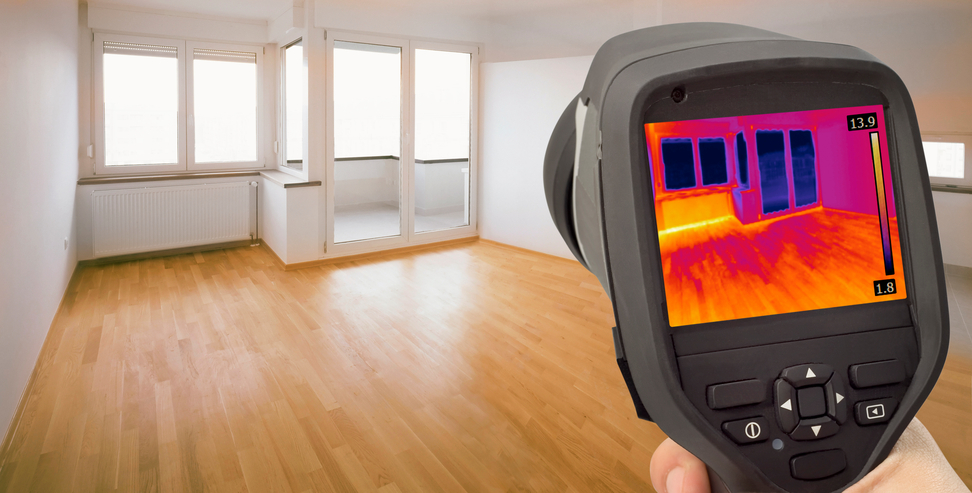Northwest Territories and Nunavut Material 30 PDH Discount Package 1
Courses in this Package
Insulation Audit and the Economic Thickness of Insulation (T04-005)
A Guide to Industrial Coatings and Metal Finishes (T03-007)
Material Properties and Corrosion (T06-001)
Basic Principles of Metallurgy and Metalworking (T04-009)
Structural Insulated Panels (SIPs) Used in Residential Wall Systems (T04-007)
Structures and Properties of Metals (T07-001)
Thermal Stress and Brittle Fracture of Material (T02-001)

This online engineering PDH course provides insight to the energy loss from an inadequate or uninsulated surface and discusses "how much" insulation is adequate on economic criteria.
Consideration of cost and conservation of fuel warrant a close assessment of insulation systems in the existing installations and new projects. Identifying the rate of thermal energy (heat) loss from an inadequate or uninsulated surface is the starting point for understanding the incentive for installing thermal insulation.
A thermal insulation thickness that satisfies an economic assessment of the minimal cost of owning and operating a thermal system is commonly called the economic thickness. The economic thickness pays for itself besides earning a return over its original cost. From this definition, any changes occurring in the prices of fuel or in the insulation cost will tend to shift the economic thickness to another value. Therefore the insulation levels, which were uneconomical in the earlier years, may be quite lucrative now due to drastic increase in fuel prices in the recent years. Based on the prevailing cost structure one has to review the entire insulation system and assess if additional insulation is necessary to achieve optimum economy.
This 4 PDH online course is applicable to mechanical, chemical and process engineers as well as system design engineers working in power, P&C, refineries, fertilizers, metal & mining, manufacturing and engineering industries. This course is also intended for energy auditors, operational and maintenance personnel, health & safety personnel and loss prevention engineers.
This P.Eng. continuing education course is intended to provide you with the following specific knowledge and skills:
- Assessment of thermal losses
- Understanding thermodynamic equations governing heat transfer from flat and cylindrical surfaces
- Understanding the concept of insulation audit (instruments and measurements)
- Learning computation of heat losses and surface temperatures with real time examples
- Learning about the potential of energy saving opportunities
- Familiarizing with economics and payback analysis
- Understanding the factors affecting insulation degradation and effective maintenance practices
- Knowing the parameters affecting quality of insulation job
- Understanding the concept of economic thickness of insulation
In this professional engineering CEU course, you need to review the document titled, "Insulation Audit and Economic Thickness of Insulation".
Upon successful completion of the quiz, print your Certificate of Completion instantly. (Note: if you are paying by check or money order, you will be able to print it after we receive your payment.) For your convenience, we will also email it to you. Please note that you can log in to your account at any time to access and print your Certificate of Completion.

This online engineering PDH course presents the basics of industrial coatings and metal finishes. It discusses common types of industrial coatings systems, basic principles in corrosion, substrate preparation, cleaning procedures and more.
The term “paint” which is used to describe a liquid or paste typically applied to a surface through a variety of application methods; provides a protective coating against corrosion, weathering, and other forms of surficial decay.
This 3 PDH online course is intended for material, industrial, manufacturing, facilities, civil, electrical, mechanical and structural engineers, as well as other technical professionals who are interested in learning more about industrial coatings and metal finishes.
This P.Eng. continuing education course is intended to provide you with the following specific knowledge and skills:
- Familiarizing with paint characteristics (wet/dry)
- Familiarizing with paint layers (primers, intermediates, finishing, clearcoats)
- Learning about industrial protective coating standards
- Understanding the process of corrosion and corrosion cells
- Familiarizing with substrate surface preparation and cleaning procedures
- Learning about paint preparation and application methods
- Understanding steel, concrete, hi-temp, powder coating systems
- Learning about the types of metal finishes
- Understanding how to paint with zinc-rich primers
- Familiarizing with the types of painting defects
Upon successful completion of the quiz, print your Certificate of Completion instantly. (Note: if you are paying by check or money order, you will be able to print it after we receive your payment.) For your convenience, we will also email it to you. Please note that you can log in to your account at any time to access and print your Certificate of Completion.

This online engineering PDH course discusses the properties and behavior of materials, including stress and strain, thermal expansion, ductility, brittleness, creep, fatigue failure and more.
The purpose of this course is to briefly introduce several material properties and failure modes. A better understanding of these failure mechanisms will enable more appropriate decisions when selecting materials for a particular application. Even a basic knowledge and awareness can help design engineers to be better equipped in delaying or preventing the failure of a material or component.
Some general causes for failure are structural loading, wear, corrosion, and latent defects. Because most engineering materials contain discontinuities most metal fatigue cracks initiate from discontinuities in highly stressed regions of the component. Failure can occur in systems with moving or non-moving parts. In systems with moving parts, friction often leads to material degradation such as wear, and collisions between two components can result in surface or more extensive material damage. Systems with non-moving parts are also prone to material failure, especially when certain types of materials operate over a broad range of pressures and are subjected to extreme temperature changes or to high energy radiation environments.
This 6 PDH online course is applicable to mechanical, nuclear and industrial engineers, design professionals, facility managers and operators who are interested in gaining a better understanding of the properties and corrosion of material.
This P.Eng. continuing education course is intended to provide you with the following specific knowledge and skills:
- Understanding the terms as they relate to materials: mechanical stress and strain, hoop stress, thermal expansion, differential thermal expansion, thermal shock & residual stress
- Understanding factors which cause mechanical and thermal stress in a component and the consequences of exceeding stress limits in materials
- Understanding why heating and cool down rates are limited
- Defining the following properties of materials: ductility, brittleness & nil-ductility transition
- Learning the differences between ductile and brittle fracture
- Understanding why a material exhibiting a ductile/brittle transition temperature has operating limitations with respect to temperature
- Learning about creep as it relates to materials
- Understanding why a large shaft becomes deformed when at rest and why rolling a large shaft prior to operation reduces the deformation
- Understanding fatigue failure and work hardening
- Learning about the chemically induced damage to a material subjected to corrosive environment
- Understanding the effects of radiation on common materials such as metals, plastics and alloys
In this professional engineering CEU course, you need to review the technical document tilted, "Materials" (Volume 1) of the CNSC Training Course "Science & Reactor Fundamentals" which was extracted from Canteach knowledge repository (Doc# 20030301).
Upon successful completion of the quiz, print your Certificate of Completion instantly. (Note: if you are paying by check or money order, you will be able to print it after we receive your payment.) For your convenience, we will also email it to you. Please note that you can log in to your account at any time to access and print your Certificate of Completion.

This online engineering PDH course provides an overview of the topics of metallurgy and metalworking.The course discusses the parameters, properties, metalworking processes, and identification methods of metal alloys.
Metallurgy is a domain of materials science and engineering that studies the physical and chemical behavior of metallic elements, their inter-metallic compounds, and their mixtures, known as alloys. Metallurgy is also the technology of metals: the way in which science is applied to the production and industrialization of metals, and the engineering of metal components for use in products for consumers and manufacturers.
This 4 PDH course is intended for material, mechanical, civil, and chemical engineers who are interested in exploring the basic principles of metallurgy and metalworking principles.
This P.Eng. continuing education course is intended to provide you with the following specific knowledge and skills:
- Learning about the history of metallurgy
- Learning about metal properties and alloys
- Familiarizing with mechanical properties of metals
- Learning about strength in metals
- Familiarizing with corrosion resistance
- Familiarizing with types of iron, steel, as well as nonferrous metals and alloys
- Understanding the basics of metalworking processes
- Learning about metal identification and testing methods
Upon successful completion of the quiz, print your Certificate of Completion instantly. (Note: if you are paying by check or money order, you will be able to print it after we receive your payment.) For your convenience, we will also email it to you. Please note that you can log in to your account at any time to access and print your Certificate of Completion.

This online engineering PDH course provides prescriptive requirements for the use of structural insulated panels (SIPs) in wall systems in the construction of residential structures. These provisions include definitions, span tables, material requirements, and other related information appropriate for use by engineers, home builders, design professionals, and building code officials.
The Prescriptive Method for Structural Insulated Panels (SIPs) Used in Wall Systems in Residential Construction (Prescriptive Method) provides prescriptive requirements to facilitate the use of SIPs in wall systems for the construction of one- and two-family dwellings. By providing prescriptive provisions for the construction of typical homes with SIP systems, the need for engineering can be eliminated or reduced for most applications.
This 4 PDH online course is applicable to engineers, design professionals and construction personnel who are interested in gaining a better understanding of the design and installation considerations of structural insulated panels.
This P.Eng. continuing education course is intended to provide you with the following specific knowledge and skills:
- Familiarizing with the SIP materials, sizes and shapes
- Understanding the SIP foundation, wall and header requirements
- Understanding SIP connection details
- Understanding the utility requirements associated with SIP wall systems
- Understanding the thermal guidelines associated with SIP wall systems
Upon successful completion of the quiz, print your Certificate of Completion instantly. (Note: if you are paying by check or money order, you will be able to print it after we receive your payment.) For your convenience, we will also email it to you. Please note that you can log in to your account at any time to access and print your Certificate of Completion.

The online engineering PDH course addresses two aspects of metals. The first part of this course deals with the basic structures of metals and how those structures are affected by various processes. In addition, it contains information on the various imperfections and defects that the metal may sustain and how they affect the metal. The second part contains information on metal properties which are considered when selecting material for engineering design purposes. Each of these properties contains a discussion on how the property is affected and the metal's application.
This 7 PDH online course is applicable to structural and mechanical engineers, construction and design personnel, technical staff and facility operators who are interested in gaining a better understanding of the structures and properties of metals.
This P.Eng. continuing education course is intended to provide you with the following specific knowledge and skills:
- Understanding bonding
- Learning about common lattice types
- Understanding grain structure and boundary
- Learning about polymorphism and alloys
- Knowing the imperfection in metals
- Learning about stress and strain and Young's
- Modulus Understanding stress-strain relationship
- Understanding the physical properties of materials
- Learning about working metals and corrosion
- Understanding hydrogen embrittlement
In this professional engineering CEU course, you need to review Modules 1 and 2, "Structures and Property of Metals" of the Department of Energy Publication DOE-HDBK-1017/1-93, "Material Science".
Upon successful completion of the quiz, print your Certificate of Completion instantly. (Note: if you are paying by check or money order, you will be able to print it after we receive your payment.) For your convenience, we will also email it to you. Please note that you can log in to your account at any time to access and print your Certificate of Completion.

This online engineering PDH course addresses the effects of thermal stress and thermal shock on a system. It explains how thermal stress and shock combined with pressure can cause major damage to components. This course also addresses ductile and brittle fracture. It describes how ductile and brittle fractures are affected by the minimum pressurization and temperature curves. It also explains the reason why heatup and cooldown rate limits are used when heating up or cooling down a system.
This 2 PDH online course is applicable to structural and mechanical engineers, construction and personnel, technical staff and facility operators who are interested in gaining a better understanding of thermal stress and brittle fracture of materials.
This P.Eng. continuing education course is intended to provide you with the following specific knowledge and skills:
- Thermal stress
- Pressurized thermal shock
- Brittle fracture mechanism
- Minimum pressurization-temperature curves
- Heatup and cooldown rate limits
In this professional engineering CEU course, you need to review Modules 3 and 4, "Thermal Stress and Brittle Fracture" of the Department of Energy Publication DOE-HDBK-1017/1-93, "Material Science".
Upon successful completion of the quiz, print your Certificate of Completion instantly. (Note: if you are paying by check or money order, you will be able to print it after we receive your payment.) For your convenience, we will also email it to you. Please note that you can log in to your account at any time to access and print your Certificate of Completion.